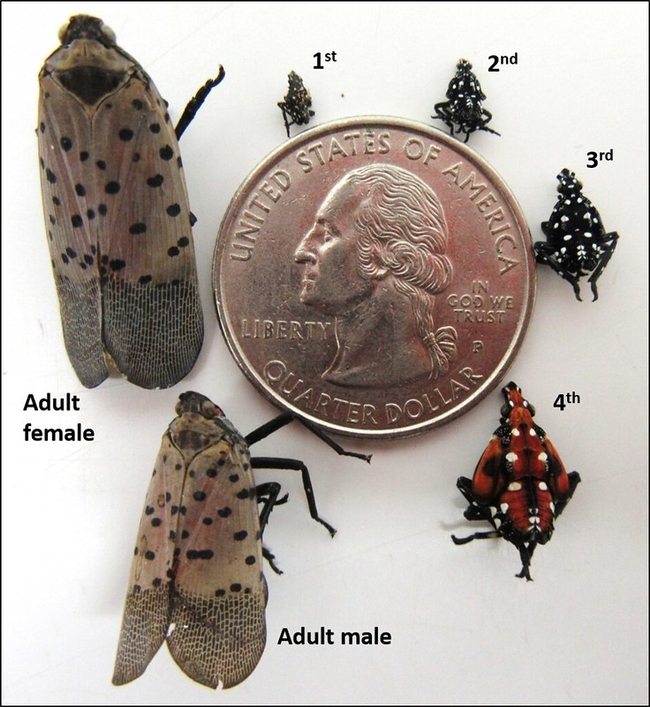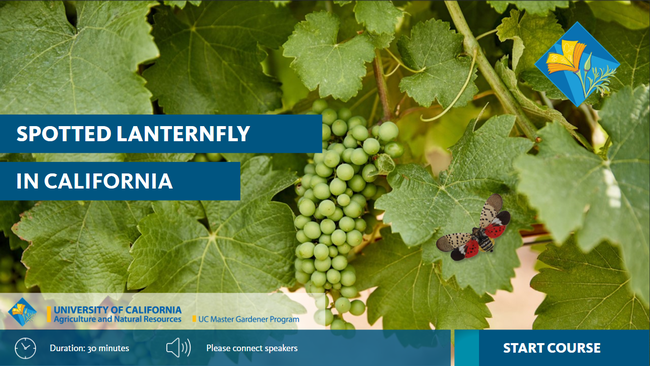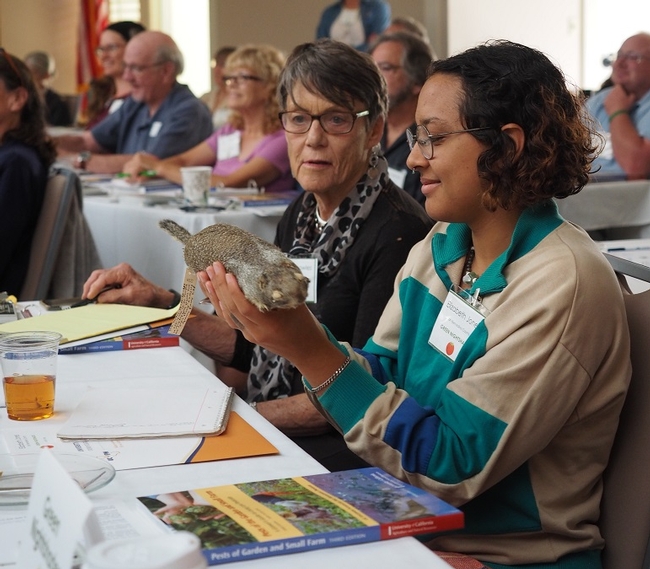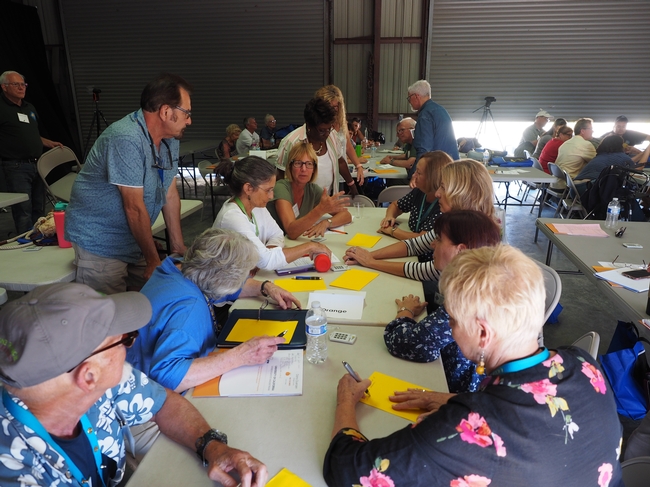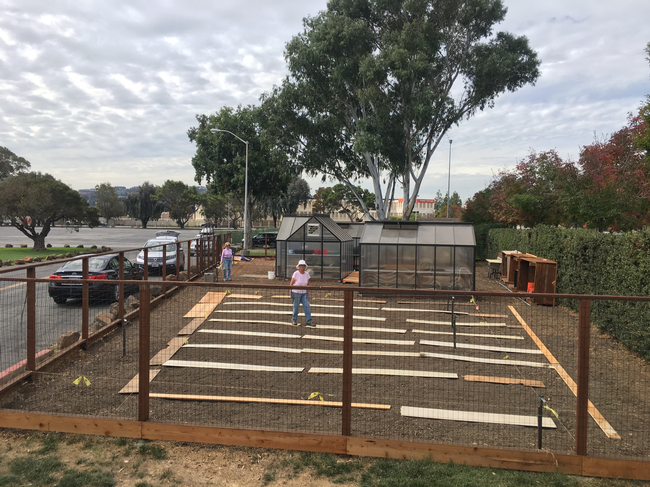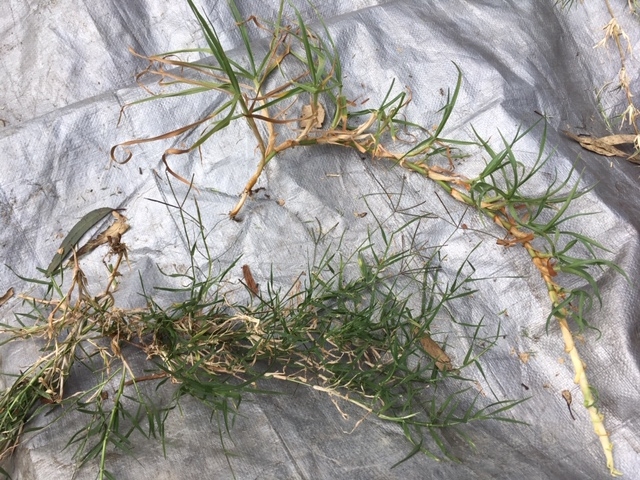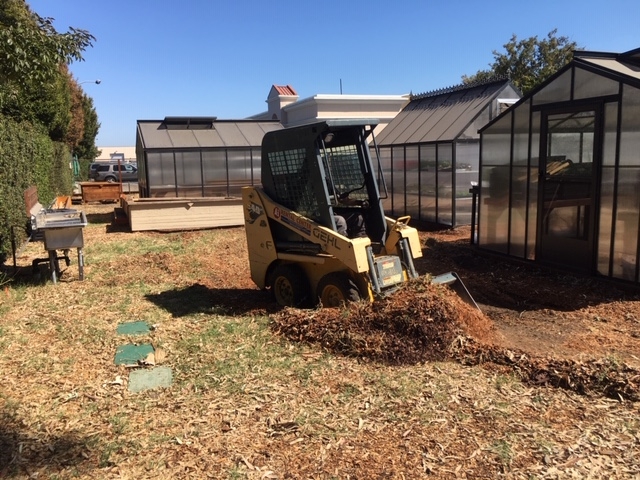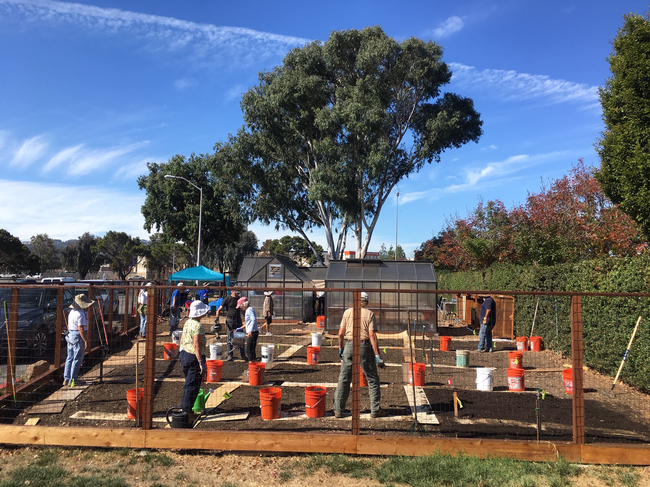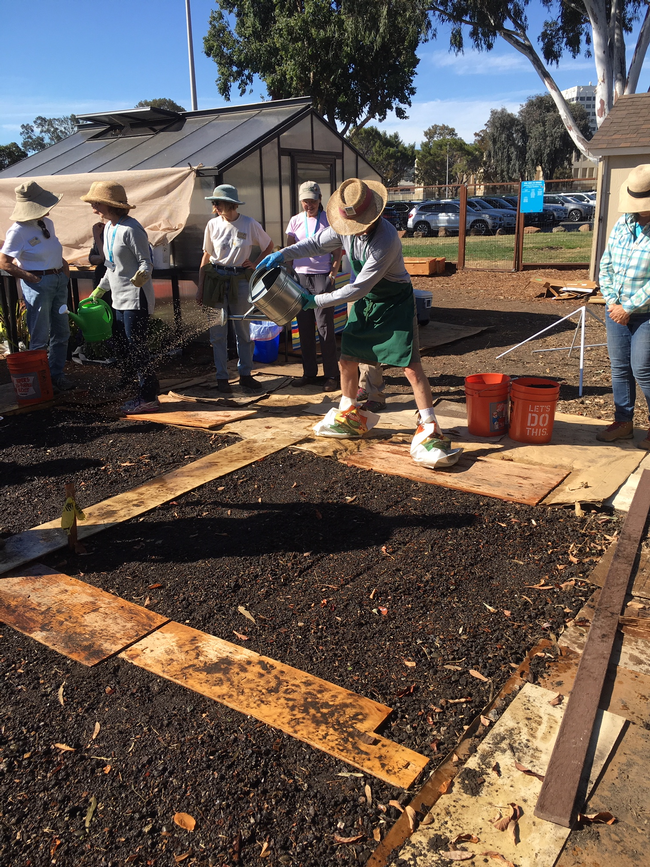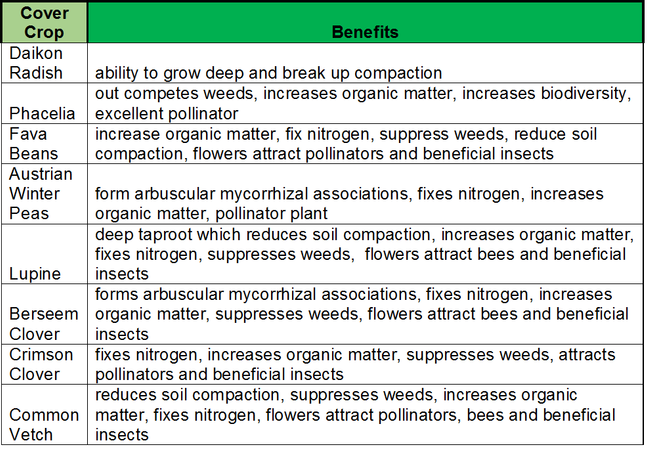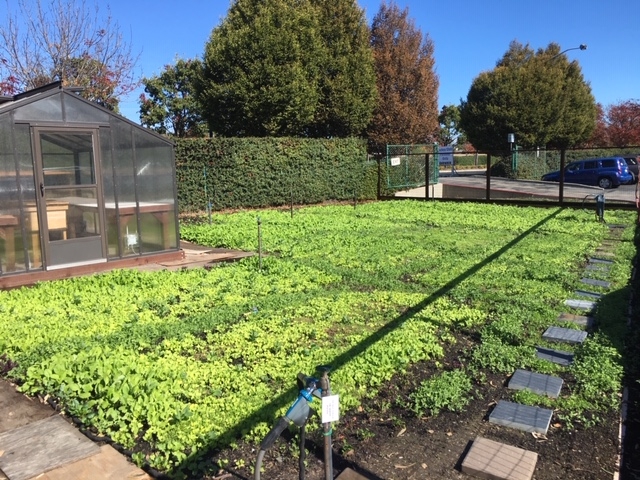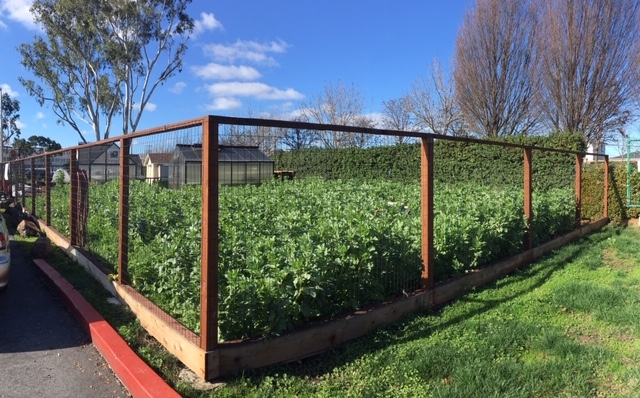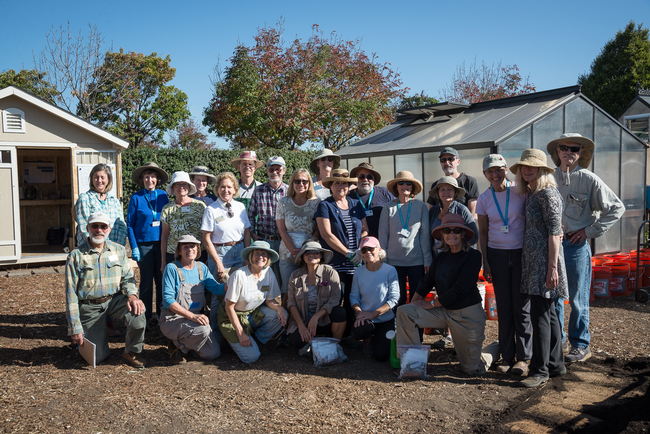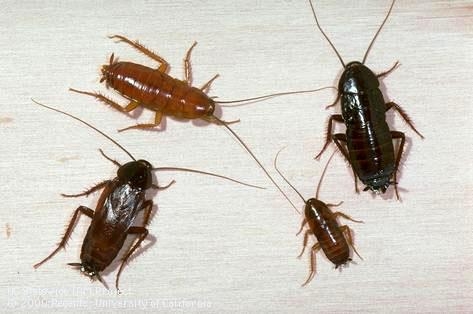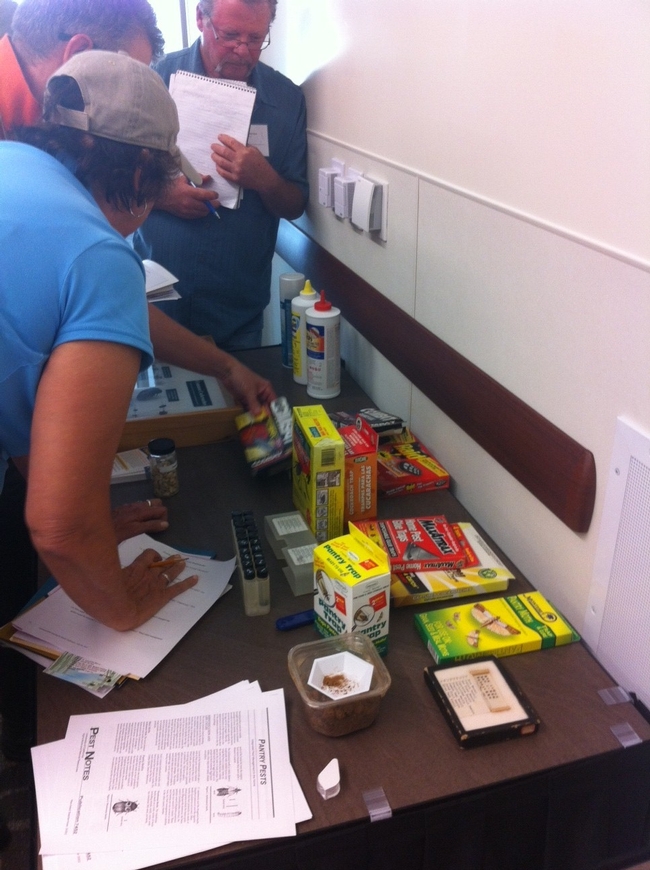Posts Tagged: IPM
Invasive Spotlight: Spotted Lanternfly
The Spotted Lanternfly (SLF) is an invasive pest that poses a great threat to California's agriculture. It was first discovered in the U.S. in Pennsylvania in 2014 and has since taken the east coast by storm, causing damage to many plant species and proving to be difficult to control. Although this pest hasn't been found in California, it is important to keep an eye out to catch an invasion early.
What does the spotted lanternfly look like?
The SLF adult is about 1 inch in length with grayish wings, black spots, and red hind wings. Egg masses are laid in the fall on the east coast and resemble splotches of mud. They are often laid on smooth surfaces like branches, rocks, or outdoor furniture. Early nymphs are very small, wingless, and black with white spots. The last nymphal stage is 1/2 inch long and red with white and black markings.
What damage does the spotted lanternfly cause?
On the east coast, the spotted lanternfly's preferred host is the invasive tree-of-heaven (Ailanthus altissima), but it will also feed heavily on grapes, maples, willows, and birch trees. SLF feeds on plant sap and excretes honeydew, which can cause sooty mold to grow on leaves and fruit. It is known to kill black walnut saplings, tree-of-heaven, and grapevines. However, for most other plants SLF is considered a plant stressor and healthy plants can usually tolerate feeding.
What can you do to help keep the spotted lanternfly out?
Spotted lanternfly is easily transported to new areas as egg masses on firewood, stone, cars, and furniture. Check vehicles and trailers when traveling to areas where SLF has been confirmed. Inspect items purchased or shipped from these areas, and don't move firewood. Familiarize yourself with the various ways that SLF egg masses may appear and report any potential sightings to the CDFA Pest Hotline: 1-800-491-1899.
If you want to learn more, visit the UC IPM Spotted Lanternfly page and consider taking the California Master Gardener Spotted Lantern Fly training module.
UC Master Gardener Program Launches eLearning course about the Invasive Spotted Lanternfly
We are excited to announce the release of our “Spotted Lanternfly in California” eLearning course, hosted on eXtension Campus. This course is designed to inform the public, UC Master Gardeners and other stakeholders of the threat posed by spotted lanternfly (SFL) to the state of California. The interactive online training includes an overview of spotted lanternfly ecology and empowers learners to detect and report spotted lanternfly sightings in California.
Spotted Lanternfly
SLF is a destructive invasive insect threatening agricultural and ornamental plants across the United States. Although the pest is not in California at this time, a key to slowing its spread is early detection and rapid response if detected. Through the education of California residents and resource professionals, we can all be part of keeping this invasive pest at bay.
With the assistance of the California Department of Food and Agriculture, UC Academics, and Penn State Extension, the UC Master Gardener Program “Spotted Lanternfly in California” eLearning course was created and is now available to all. Pest information and additional resources are available online.
How to Enroll
Course enrollment is free and accessed through eXtension Campus, you must either have or create a free login to enroll in the course. If you encounter problems or have questions about creating your account, please see the Campus Help Page. The course takes approximately 40 minutes and includes a graded quiz, completion time may vary by user. Learners may stop and restart, or take as many times as needed.
How to Receive a Certificate
To receive a certificate for the “Spotted Lanternfly in California” eLearning course, you must view and complete the module, as well as pass the quiz with a score of 80% or higher. Once you have passed the quiz, you can print a certificate and collect a virtual Spotted Lanternfly eLearning badge.
Continuing Education
UC Master Gardeners are eligible for one hour of continuing education for completing the “Spotted Lanternfly in California” eLearning course. It is the volunteers' responsibility to enter their hours in the Volunteer Management System to receive credit.
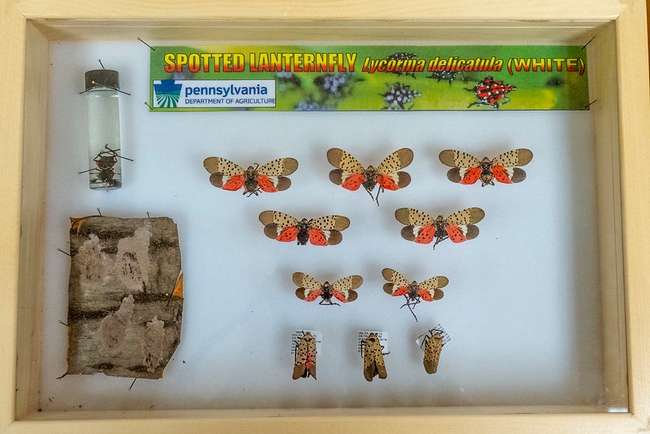
SLF Display
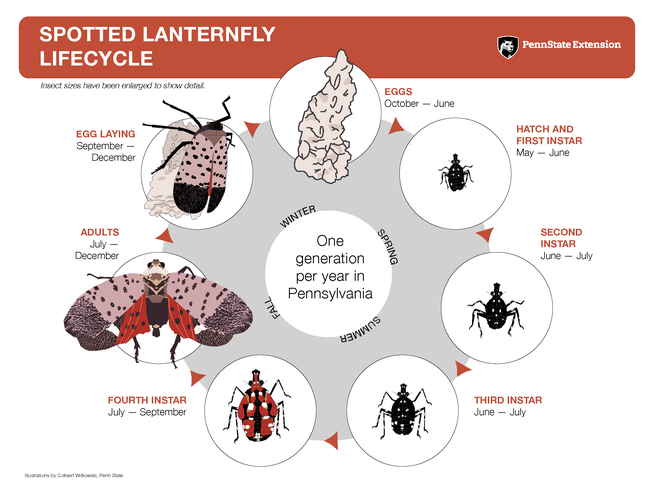
SLF Lifecycle
Vegetable Pest Management Training Series a Success
It may seem odd to see seventy-five people at a hotel conference center learning about insects and rats on vegetables, but not if you are a UC Master Gardener. The UC Statewide Integrated Pest Management Program (UC IPM) in partnership with the UC Master Gardener Program just wrapped up the Vegetable Pests and Solutions train-the-trainer series. More than 340 UC Master Gardener volunteers from across the state took part in the regional trainings offered in Fresno, Orange, Placer, San Luis Obispo and Sonoma counties.
Active Learning
The advanced UC IPM training offered a hands-on, train-the-trainer experience that increased participants' knowledge of insect pests of vegetables, vegetable plant diseases and disorders, and vertebrate pests of gardens and homes. One of the highlights of the training was Human-Wildlife Interaction Advisor, Niamh Quinn, showing a taxidermy collection of vertebrate pests at the Orange and San Luis Obispo County workshops. Being able to handle and observe the different markings, colors and claws on certain animals makes future identification easier as participants learned the signs to look for when identifying vertebrate pest damage in the vegetable garden.
UC Master Gardener volunteers were lead through exercises that mimic questions commonly received from the public. Some of the questions had a photo, others just a sparse description that volunteers worked together to solve using online IPM resources and materials provided at the training. The exercises were designed to challenge and expose the learner to different types of scenarios and tools they can use in the future.
Outreach and Education
The UC Master Gardener Program's mission is to extend research-based information, by attending advanced trainings such as this, volunteers are even more prepared to contribute to the program's mission. With exposure and practice using new resources and materials training attendees have the tools and knowledge needed to educate the public on vegetable pests and solutions including scripted PowerPoints, activities, handouts, and vegetable pest identification card sets. One attendee reported “As a first year UC Master Gardener, this training helped me become more comfortable and more confident researching answers for pest management questions.”
At the conclusion of the training volunteers convened with their fellow county volunteers to talk about their plans to take new found knowledge back into their communities. Some of the great ideas generated were:
- offer seasonal pest problems workshops
- include a “Need Help Solving Pest Problems?” flier for all events
- add IPM tips to newsletters and social media
- integrate IPM into presentations as appropriate or relevant to topic
- add signage for damaged or diseased plants with IPM solutions in demonstration gardens
- share IPM toolkit at farmers markets and demo garden events
How We are Making a Difference
One portion of the agenda was focused on how the UC Master Gardener community is making a difference. With 6,000+ volunteers serving more than 517,000 Californians per year the impact of the UC Master Gardener volunteer effort is truly amazing. Through statewide program evaluation efforts the impact in sustainable landscaping, food gardening and community well-being is now being analyzed and reported in the programs annual report. Volunteers can see the impact they are having statewide and be proud of being part of a group that social changes they are seeing in their local communities.
As active volunteers and life-long learners UC Master Gardeners are a powerful educational tool and inspiration for others not only in the garden but in the volunteer community. Statewide educational offerings like UC IPM's train-the-trainer series help hone the diagnostics skills while building confidence in the subject matter.
The next statewide training opportunity for UC Master Gardener volunteers will be the 2020 UC Master Gardener Conference, Sept. 28 –Oct. 2, 2020 at the Granlibakken, Tahoe. The conference is the beginning planning stages and taking speaker and topic suggestions, click here to suggest a speaker or topic.
Local Garden Gem in San Mateo County: The Gardening Education Center
In the heart of San Mateo County sits a garden gem, The Gardening Education Center, a 5,000 square foot growing space established by the UC Master Gardener Program of San Mateo County. This green garden space was approximately three years in the making, which included fundraising, planning, and actively working the land.
In the spring of 2018, when the site was unveiled, UC Master Gardener volunteers went to work. The plan was to prepare the space for a small (4-5 fruit tree) orchard, three large raised bed planters for seasonal flowers and vegetables, and separate specialty in-ground beds featuring natives, succulents and other drought tolerant plantings.
Prior to the planting, UC Master Gardener volunteers sheet mulched with cardboard and wood chips. This assisted in smothering the invasive groundcover that had taken over the overgrown neglected space.
Unbeknownst to UC Master Gardener volunteers, there was significantly more Bermuda grass than was initially suspected. Bermuda grass seeds can be an aggressive, the grass itself is tough and persistent. Over the next few months the grass eventually crept in and completely took over. Drastic measures were needed to eradicate the pesky weeds so the committed volunteers accepted the challenge and made a plan to eradicate the invasive grass without utilizing chemicals.
The plan of attack included eradicating as much Bermuda grass as possible from the very compacted and dry soil as naturally as possible. They scraped the top few inches of the soil off of the area to get rid of as many rhizomes and stolons of the pernicious Bermuda grass.
They worked tirelessly to remove the Bermuda grass, and prepared the soil for compost tea and cover crop planting. By removing the Bermuda grass it made a huge difference in the look, health and overall maintenance of the garden space.
The following eight cool season cover crops were chosen for the first planting because of these benefits:
In the end, UC Master Gardener volunteers produced a harvest of plenty. They learned the finer points of making compost extract using premier compost and applying it to the soil to introduce microbial life into the soil, attracting beneficial fungi, nematodes and earthworms. Not only were they able to plant diverse cover crops that crowded out the weeds, they were also successful in reaching their goal of treating the 1,600 square foot space of garden soil with no pesticides.
The Gardening Education Center has been open to UC Master Gardener volunteers since last spring, as they work to create the infrastructure to accommodate classes for the public. There are three greenhouses onsite that are currently growing plants for the UC Master Gardener Program of San Mateo and San Francisco Counties.
http://smsf-mastergardeners.ucanr.edu/Programs/
Compost Class pictured above, front row from left to right: Mark Foulard, Norine Cepernich, Terry Messinger, Maggi Lim, Cathy Vreeberg, Gaye Torjusen, (and standing) Nancy Kruberg, Terry Lyngso, and Steve Maskel. Second row from left ot right: Patty Deering, Linda Dvorak,Kathy Stamm, Kate Sweetman, Carol O'Donnell, John O'Hara, Charlie Akers, Charlene Landreau, Ginny Piazza, Cynthia Nations, Nick Landolfi, Janet Gilmore, Yana Maloney, and behind Yana, John Bassetto (Norine's husband and heavy equipment operator).
Many thanks to this group of volunteers, who have led the efforts and plan for The Gardening Education Center space and whom have spent countless volunteer hours! They have put a lot of thought into making this an excellent learning process for all. We would like to especially recognize Terry Lyngso, whom donated compost, seeds and paving stones to the project.
UC Master Gardener volunteers know household pests!
It's well known that the UC Master Gardener Program produces dedicated volunteers who are extremely knowledgeable about home horticulture and gardening. UC Master Gardener volunteers; especially those working at help desks, hotlines, and farmers markets, respond to thousands of requests each year, extending information and resources to California's residents that help them maintain landscapes, grow healthy food, and manage pests using the principles of integrated pest management (IPM).
Pests don't disappear at the front door, however: there are plenty of significant pests threatening our households, structures, and communities. In fact, residents in urban counties may have more need for information and resources associated with household pest IPM than for landscape and garden IPM. Even rural counties are filled with homes that may be infested by key urban pests such as ants, cockroaches, bed bugs, flies, termites, pantry pests, and rodents.
UC Master Gardener Programs have seen increasing numbers and rates of requests for information about these pests. Using the principles of IPM, household pests can be effectively managed while minimizing negative impacts to our communities and the environment. For instance, many unnecessary pesticide applications are made in urban environments, leading to pesticide exposure events, pesticide resistance issues, and environmental contamination, especially of urban surface water systems. In many cases, pests could have been managed using preventive or nonchemical tactics.
Whether in the home or in the garden, IPM is one of the key knowledge areas in which UC Master Gardener volunteers receive training. Using the UC IPM website and its materials, such as Pest Notes and Quick Tips, UC Master Gardeners are able to help answer household pest requests. Even so, volunteers familiar with plant ecosystems may not always feel confident when addressing pest problems in the home. Luckily, an advanced training opportunity exists for UC Master Gardener volunteers who would like to increase their proficiency in household IPM.
A continuing education module, entitled Advanced IPM Training for UC Master Gardeners: Household Pests, was developed by Dr. Andrew Sutherland, Urban IPM Advisor in the San Francisco Bay Area. This advanced training has been provided several times for UC Master Gardeners at in-person hands-on workshops, but it is also available online within UC IPM's IPM Resources for UC Master Gardeners web portal.
The module includes a PowerPoint presentation, word-for-word script, instructions on hands-on exercises associated with the presentation, and handouts providing detailed information about the pests covered. Help Desk leaders and other UC Master Gardener volunteers can use these materials to deliver the modules to other volunteers using a train-the-trainer model. The module can also be delivered to residential clientele directly. Pests discussed include: ants, bed bugs, cockroaches, pantry pests, termites, and other wood-destroying insects.
We encourage you to take advantage of this unique training opportunity, and become a local expert on household pests. As always, UC ANR Advisors like Dr. Sutherland are available to answer difficult questions and to provide more in-depth training, but this module can certainly help you build confidence and prepare you for that next bed bug request (you know it's coming!).
The updated continuing education module can be found at the following URL: http://ipm.ucanr.edu/FAQ/mghousehold.html
For questions about this Household Pests module, please contact Dr. Andrew Sutherland






